1. Internal Analysis
1.1. The Roots of Competitive Advantage
1.1.1. Distinctive Competencies: firms specific strengths
1.1.1.1. Resources
1.1.1.2. Capabilities
1.1.1.3. The Role of Strategy
1.1.1.4. https://www.youtube.com/watch?v=Ul_kXIFdwQE&list=PLhu8z9t6qOV9oraxWfJBjFbyBTW9spqyV
1.2. The Value Chain
1.2.1. Primary Activities
1.2.1.1. Production
1.2.1.2. Marketing and Sales
1.2.1.3. Customer Service
1.2.1.4. Research and Development
1.2.2. Support Activities
1.2.2.1. Logistics
1.2.2.2. Human Resources
1.2.2.3. Information Systems
1.2.2.4. Company Infrastructure
1.3. Building Blocks of Competitive Advantage
1.3.1. Quality as Excellence and Reliability
1.3.2. Innovation
1.3.3. Customer Responsiveness
1.3.4. Efficiency
1.3.5. ROIC= net profits/invested capital
1.4. Analyzing Competitive Advantage and Profitability
1.5. Durability of Competitive Advantage
1.5.1. Barriers to Imitation
1.5.2. Capability of Competitors
1.5.3. Industry Dynamism
1.6. Avoiding Failure
1.6.1. Focus on building blocks of Competitive Advantage
1.6.2. Continuous Improving
2. Use Benchmarking
3. External Analysis
3.1. Opportunities:take advantage of the conditions in industry.
3.2. Threats: conditions endanger profitability
3.3. Competitive forces model
3.3.1. Risk of entry by potential competitors
3.3.1.1. Potential Competitors: companies that can enter the sector
3.3.1.2. Economies of scale
3.3.1.3. Brand loyalty: preference for certain brand
3.3.1.4. Absolute cost advantages: lower cost structure
3.3.1.5. Switching costs: how expensive it is to change of preference
3.3.1.6. Government regulations: major entry barrier
3.3.2. Rivalry among stablished companies
3.3.2.1. Industry competitive structure: number and size
3.3.2.2. Industry demand:
3.3.2.3. Cost conditions: fixed costs high
3.3.2.4. Exit barriers: how hard it is to get out
3.3.2.4.1. Emotional attachments
3.3.2.4.2. Economía dependence
3.3.2.4.3. Bankrupcy regulations
3.3.2.4.4. Maintain expensive assets
3.3.3. The Bargaining Power of Buyers
3.3.3.1. Buyers have choice of several sellers
3.3.3.2. Buyers buy in large quantities
3.3.3.3. Supply industry depend upon buyers
3.3.3.4. Buyers can threaten to enter the industry
3.3.4. Bargaining power of suppliers
3.3.4.1. Few substitutes for the product
3.3.4.2. Industry not important for suppliers
3.3.4.3. Companies would stand significant switching costs
3.3.4.4. Suppliers can threaten enter the industry
3.3.5. Substitute Products
3.3.5.1. Other products can substitute the same product
3.3.6. Complementors
3.3.6.1. Companies that sell products to upgrade the seller product
3.3.7. The Five Competitive Forces That Shape Strategy
3.4. Industry Life Cycle Analysis
3.4.1. Embryonic industries: just beginning to develop
3.4.2. Growth Industries: product demand increases
3.4.3. Industry shakeout: demand starts to decline
3.4.4. Mature industries:market totally saturated
3.4.5. Declining industries: growth becomes negative
3.5. Limitations of models for industry analysis
3.5.1. Life Cycle Issues: fail to pass embryonic stage
3.5.2. Innovation and change: innovation major factor in industry evolution
3.5.3. Company differences:overemphasize the industry structure
3.6. Macroenvironment
3.6.1. Macroeconomic forces
3.6.1.1. growth rate of economy
3.6.1.2. interest rates
3.6.1.3. currency and exchange rates
3.6.1.4. inflation / deflation
3.6.2. Global Forces: international trade
3.6.3. Technological Forces: Internet lowered barriers
3.6.4. Demographic forces: age, gender, ethnic race, sexual orientation
3.6.5. Social forces: mores and values
3.6.6. Political and legal forces: changes in laws and regulations
